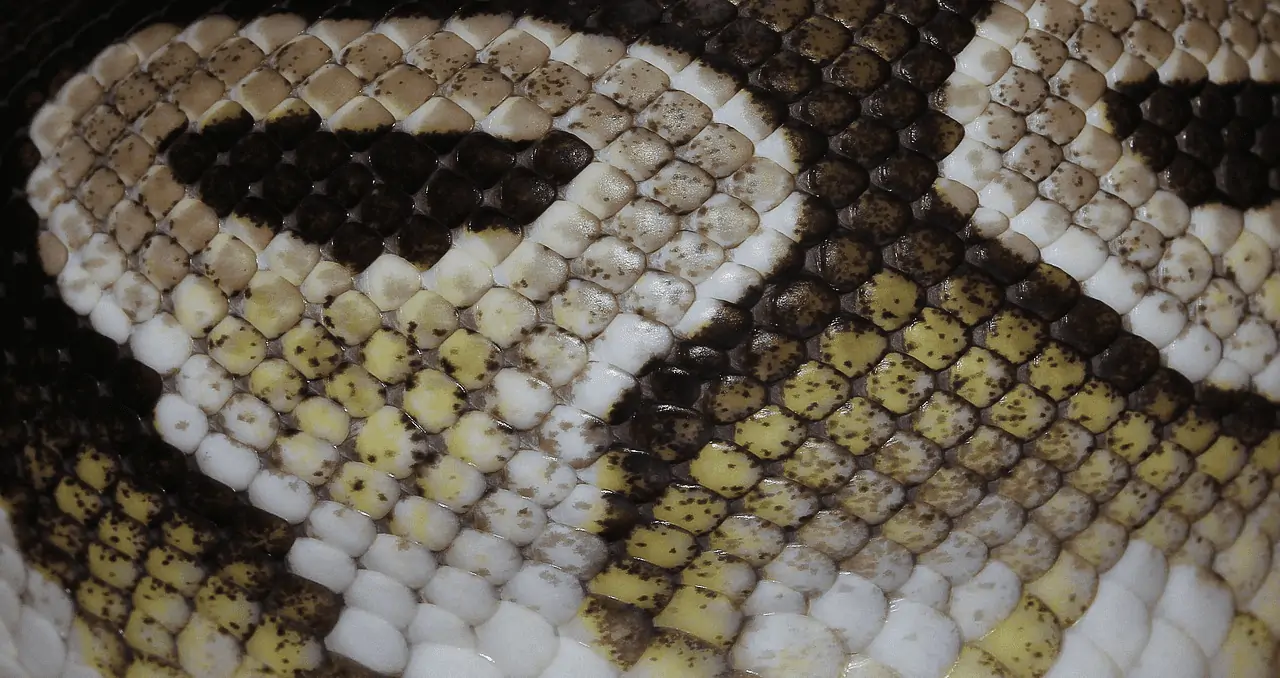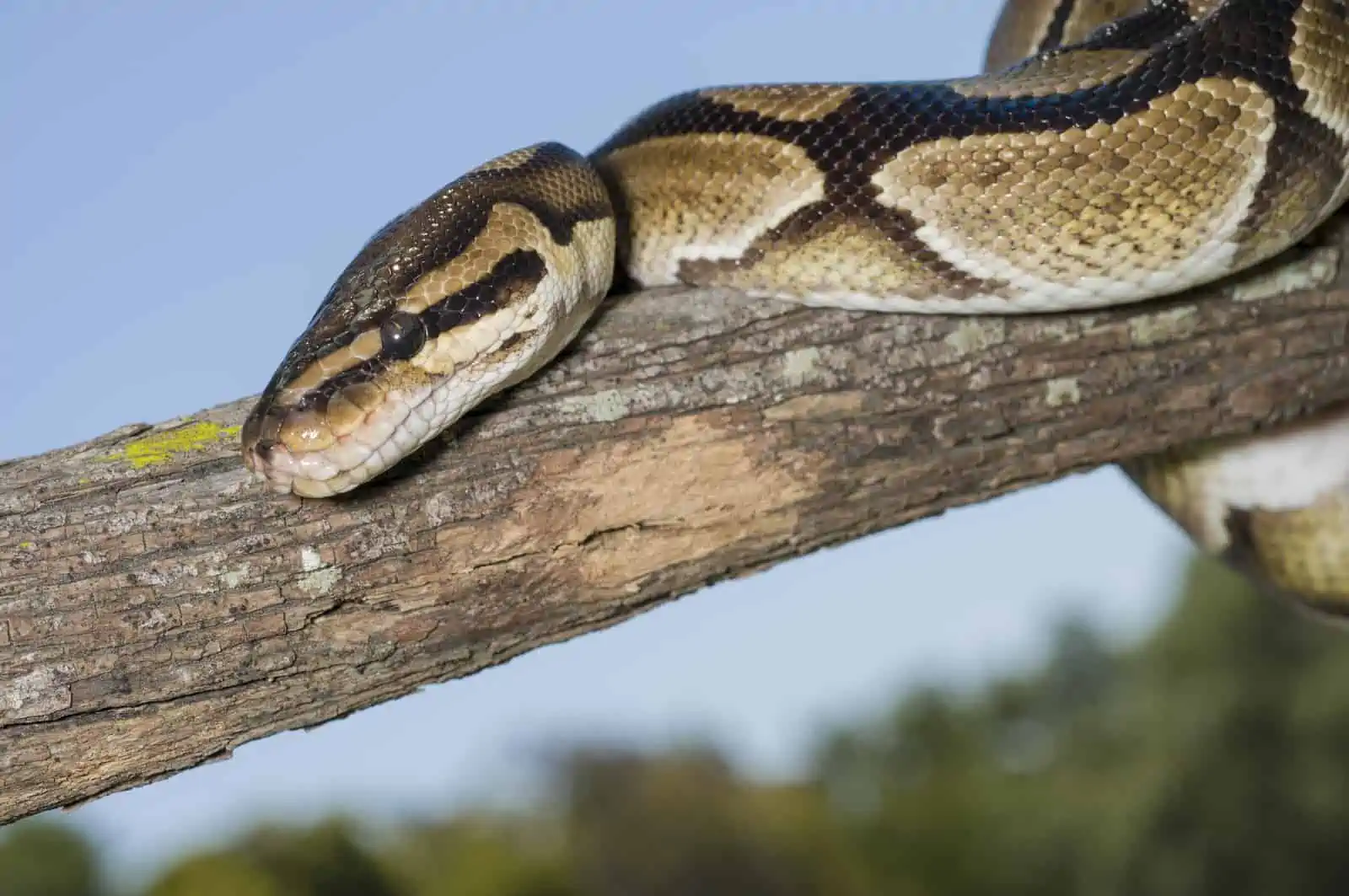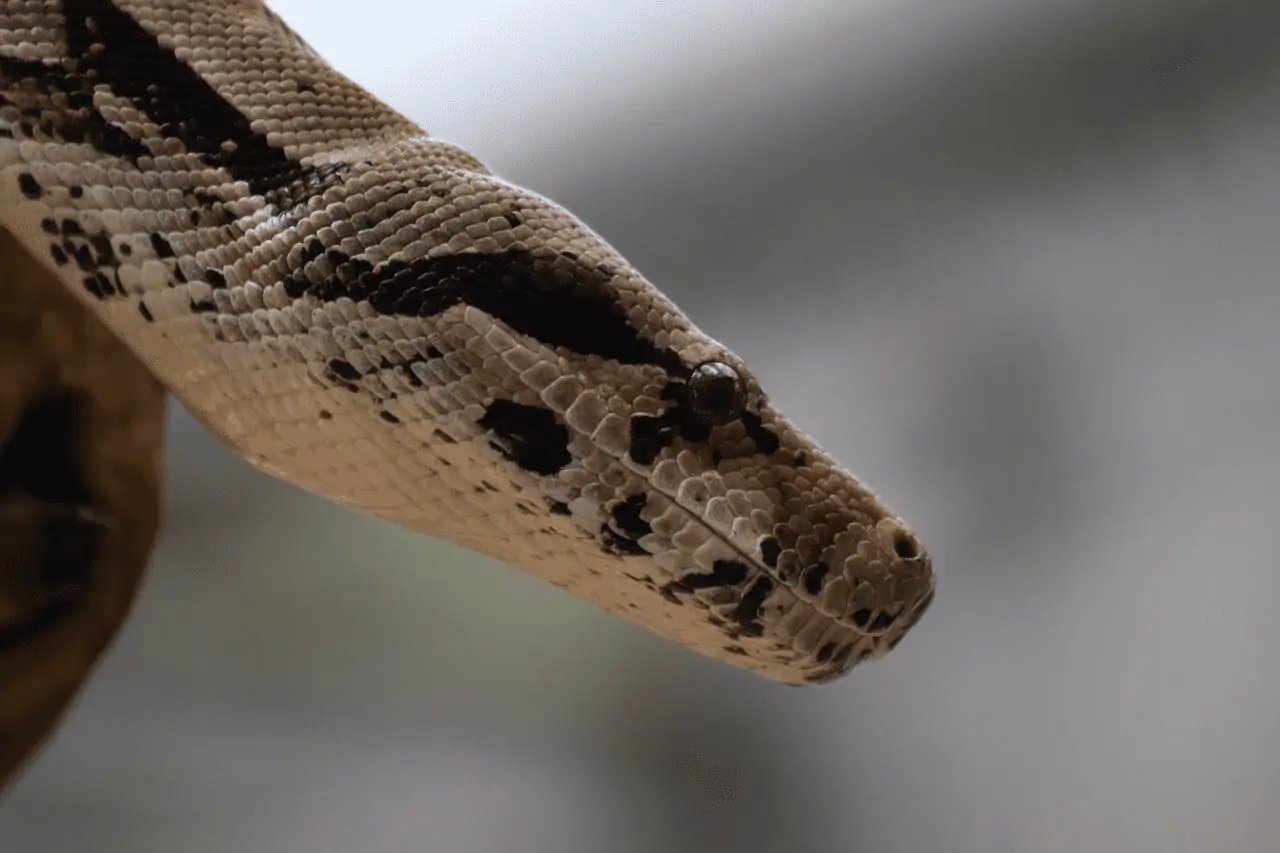I was on my way to work when I got a call from one of my clients. They said that their ball python was acting strange, and they were worried that something was wrong. I told them I would be right over.
When I got to their house, I could see the snake was covered in tiny black dots. I knew immediately that it was snake mites. These pests are so small that they are difficult to see with the naked eye, but once you know what you’re looking for, they are easy to spot.
Mites are parasites that feed on the blood of their host. They can cause a great deal of stress to their host and can even lead to death if left untreated. Mites are most commonly found on snakes that are housed in unsanitary conditions. Poorly maintained enclosures are the perfect breeding ground for these pests.
Let’s take a closer look at the signs and symptoms of mites, how to treat them, and how to prevent them from coming back. So without further delay, let’s dive in!
How Do I Know if My Ball Python Has Mites?
The most common sign of mites is the presence of tiny black dots on the skin of your snake. These dots are the mites themselves. If you look closely, you may even be able to see them moving around. Another way to tell if your snake has mites is by looking for ash-like “dust” on its scales. This “dust” is actually mite droppings and is a tell-tale sign that your snake has these pests.
Mites are most commonly found around the head and face region of the snake, but they can be found anywhere on the body. If you see mites on your snake, it’s important to take a close look at the entire enclosure, as mites will often be found on the walls and in the substrate.
Signs & Symptoms of Snake Mites
In addition to the visual signs of mites, your snake may also exhibit some behavioral changes. Mites can be extremely stressful for your snake and can cause it to become listless and lethargic. If your snake is normally active and playful, and you notice a sudden change in behavior, it could be a sign that it has mites.
Other signs and symptoms of mites include:
- Swelling around the eyes or face
- Sores or lesions on the skin
- Excessive scratching or rubbing against surfaces
- Soaking in water
- Black or red specks floating in the water
- Anemia (pale coloration)
- Irritation and inflammation of the skin
- Twitching head.
- Difficulty shedding
- Weight loss
- Unusual lethargy
- Loss of appetite
If you notice any of these signs or symptoms in your snake, it’s important to take action immediately. The longer you wait, the more damage the mites will do.
Types of Ball Python Mites
There are three different types of mites that can infest your ball python:
- Ophionyssus natricis – small, red or black dots or specks
- Ophionyssus acertinus – red or orange specks
- Trombiculidae mites – red specks (berry bugs)
All three of these types of mites are parasitic but the most common in snakes is Ophionyssus Natricis which will feed on the blood of your snake. They can cause a great deal of stress and even death if left untreated.
Stages of Mites Life Cycle
Mites go through five different stages in their life cycle: egg, larva, protonymph, deutonymph, and adult. The entire life cycle can be completed in as little as 7-16 days at room temperature, which is why mites can spread quickly.
Egg: The egg stage lasts for 28-98 hours. During this time, the mite will attach itself to the skin of the snake and lay its eggs.
Larva (non-feeding): The larva stage lasts for 18-47 hours. The larva is not yet capable of feeding on the snake’s blood.
Protonymph (feeding): The protonymph stage lasts for 3-14 days. During this time, the mite will begin to feed on the snake’s blood.
Deutonymph (non-feeding): The deutonymph stage lasts for 13-26 hours. The deutonymph is not yet capable of reproducing.
Adult (feeding, mating): The adult stage lasts 10-32 days. During this time, the mite will mate and reproduce.
After the adult stage, there will be a new generation of mites that are ready to begin the cycle all over again.
What Do Mites Look Like on a Ball Python?
Mites are very small arthropods that can be difficult to see with the naked eye. They are typically red, brown, or black in color and may appear as tiny specks on your ball python’s skin.
Mites can also be seen crawling around in your snake’s cage. If you suspect your ball python has mites, it’s important to take action immediately to treat the problem.
Where Do Ball Python Mites Come From?
There are a few different ways that mites can end up in your ball python’s enclosure:
Poor Hygiene
If your enclosure is not cleaned regularly, mites can quickly become a problem. Mites can live in the substrate, on the walls of the cage, or anywhere else in the enclosure.
Introducing a New Reptile
If you introduce a new reptile into your home, there is always a risk that it could be carrying mites. It’s important to quarantine any new reptiles for at least 30 days to ensure they are not infested with mites.
Wild reptiles
If you ever handle a wild reptile, there is a risk of picking up mites. Be sure to wash your hands thoroughly after handling any wild animals.
How To Get Rid Of Snake Mites
If your ball python does become infested with mites, it’s important to take action right away. The longer you wait, the more damage the mites will do. There are a few different options for treating mites:
Betadine Bath
Beta-dine (povidone-iodine) baths are a safe and effective way to kill mites. To prepare a betadine bath, dilute the betadine with warm water until it is a light brown color. This concentration is safe for your snake to soak in for about an hour. After the bath, be sure to put mineral oil on the snake’s heat pits and eyes.
Pyrethroid
Pyrethroid insecticides are effective against mites, but they can be toxic to reptiles if not used correctly. If you choose to use a pyrethroid insecticide, follow the instructions carefully.
Some of the most common pyrethroid insecticides are permethrin, tetramethrin, metofluthrin, and ivermectin. These products should only be used by a veterinary professional.
Note: Ivermectin is toxic to turtles and tortoises so it NEVER be used to treat mites in these species.
Carbaryl Powder
Carbaryl powder is another effective treatment for mites. To use this method, place your snake in a container with a layer of powder at the bottom. The snake should be left in the container for several hours. Afterward, the snake will need to be rinsed off with warm water.
Nix
Nix is a 2-in-1 mite treatment that can be used to kill adult mites and their eggs. To use this product, mix it with water and put the solution into a spray bottle. The snake should be sprayed until it is damp. Be sure to avoid getting the Nix solution into your snake’s eyes, nose, or mouth.
Provent-A-Mite
Provent-A-Mite is a powerful mite eradication formula that can be used to treat reptile mites. It is most commonly used by people with large collections of snakes but can be used on smaller scales as well.
If you are using PAM to treat your reptile mites, be sure to follow the directions carefully and always consult a veterinarian if you have any concerns.
After treatment, it’s important to clean your snake’s enclosure thoroughly. Mites can hide in the substrate, on the walls of the cage, or anywhere else in the enclosure. The entire enclosure should be cleaned and disinfected. Any substrate should be thrown away, and all cage accessories should be washed in hot, soapy water.
How Long Does It Take To Treat Snake Mites?
Treating snake mites can be a long and difficult process. The length of time it takes to treat snake mites depends on the severity of the infestation and the method of treatment you are using. If the infestation is mild, it may only take a few days to get rid of the mites.
However, if the infestation is more severe, it may take weeks or even months to eliminate the parasites completely. Be sure to follow your veterinarian’s instructions carefully and continue treatment for as long as they recommend.
How Do I Get Rid of Ball Python Mites?
Prevention is the best way to deal with mites is to prevent them from infesting your ball python’s enclosure in the first place. Some simple steps you can take to prevent mites include:
- Regularly cleaning and disinfecting the enclosure
- Quarantining any new reptiles for at least 30 days
- Avoiding handling wild reptiles
- Washing your hands after handling any reptiles
- Checking new reptiles for mites before adding them to the enclosure
If you take these steps, you can help to prevent mites from becoming a problem in your snake enclosure.
Take Care of Your Snake Health!
Mites can be a challenge to get rid of, but with patience and perseverance, you can eliminate them from your snake’s enclosure. There are a variety of treatment options available, and it is important to consult a veterinarian before starting any treatment regimen. Be sure to clean the enclosure thoroughly after treating the mites and keep an eye out for any signs of re-infestation.
We hope that this article has been helpful in teaching you how to get rid of snake mites. If you have any questions or would like to share your own experiences with treating reptile mites, let us know in the comments below!





2 Comments
Thank you for the nice and clear articles on your site.
But I do have a question about mites.
I work at a rescue for reptiles and there I regularly come in contact with snakes that have mites.
How do I best prevent taking the mites home to my collection?
Thank you so much for the kind words Wouter! I’m always happy when the information on our site is helpful. Mites can definitely be a frustrating issue, and preventing cross-contamination is important. Here’s what I recommend:
Firstly, hygiene is key. Always wash your hands thoroughly with soap and water after handling any reptiles at the rescue, and change your clothes before interacting with your own snakes. Mites can easily hitch a ride!
Secondly, consider keeping a dedicated set of handling tools (snake hooks, tongs, etc.) at the rescue center, and separate tools for your home collection. This minimizes the chance of transferring mites on equipment.
Taking these precautions will greatly reduce the risk of bringing mites back to your own collection.